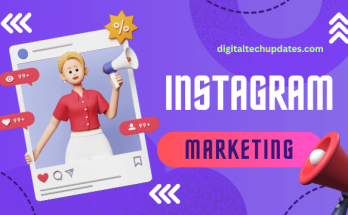Whether you’re using social media video ads or other forms of marketing and advertising, lead generation is critical if you have a high-involvement purchase, whether that’s a product or a service. A good lead generation process will help you build well-qualified leads, and that can make you more efficient. You can speed up the time spent on selling and spend less time on administrative work and prospecting.
If the marketing team can work along with sales to get more customers, that tends to be the best-case scenario.
The following are seven things to know about lead generation in the modern world.
1. The Pipeline
When you have an effective lead generation program, it should have a pipeline through the sales funnel. If someone isn’t in your pipeline yet, they’re probably going to benefit from your top-of-funnel marketing. They will, as such, probably fit into a cold category.
Cold categories include unaware, aware, and friendly. Once a customer is beyond the friendly stage, they’ve provided their contact information or given permission to be contacted. They then move from the top of the funnel to the middle.
That’s when qualification becomes an important consideration. A marketing lead that’s been identified as having an interest in your products or services is qualified. A qualified lead will meet certain criteria. For example, they might have shown interest on social media or provided their email address on your landing page.
There are usually some additional criteria that go into things, too, for a lead to be considered valuable. For example, they might have passed through a set of marketing criteria.
2. The Importance of Lead Generation
When someone shows organic interest in a business, then there’s a much more natural transition from stranger to customer. Lead generation is within the second part of the larger method of inbound marketing, occurring after you attract an audience and you’re ready to convert them into leads.
3. Types of Lead Generation Marketing
After you put all the elements together, you might be able to use promotional channels to drive traffic to a landing page so that you can start to generate leads.
Content is a good way to get users to your landing page. You create content so that you’re delivering free and useful information. Your content should include a CTA somewhere, and the happier a visitor is with the quality of your content and the information you provide them, the more likely they are to click your CTA and go to your landing page.
Email is a good form of marketing to reach an audience who already knows something about your brand and your products or services. It’s easier to ask this audience to take action because they’ve already gone through the step of subscribing to your list.
In an email, you want to make sure your CTA is clear and compelling.
Ads and retargeting can help convert, but you need to make sure your ad and landing page are in-line with one another and you’re highly clear and specific on the action you want a user to take.
When you use social media, you can guide your followers on platforms to take action, and you can also use other options like product trials and referral marketing.
4. Qualifying a Lead
A lead, as mentioned, is someone who’s shown interest in your product or service. A sales lead is generated through the collection of information. Then, you have to qualify the lead’s level of interest. For example, if a lead downloads a coupon, that can show direct interest in a product or service.
With lead generation, you have to collect enough information to know whether someone truly has an interest in your product or service. How much information is enough to determine this is going to vary depending on your business.
Lead scoring lets you qualify your leads in a quantitative way. You can assign your leads a numerical score or value. Then, you can make a determination on where they fall on a scale from interested to ready to buy. The criteria for the actions are up to you to decide, but you want to keep it uniform across departments, so everyone’s basing things on the same scale.
A lead’s score can be based on the action they’ve already taken or whatever criteria determined by your sales team.
5. Strategies
When you’re doing lead generation online, there are a lot of campaigns and strategies you can use, varying depending on the platform where you’re capturing leads.
For example, Facebook is an excellent platform for lead generation. Facebook Ads was launched in 2007, and since then, it’s become one of the major ways businesses capture leads.
You can use lead ads, and there’s also the option to add a call-to-action at the top of your Facebook page.
Increasingly LinkedIn has been ramping up advertising efforts, and there are Lead Gen Forms, which will auto-populate forms when a user clicks a CTA.
Google gets billions of searches every day, so its pay-per-click ads are an important part of a lead generation strategy for a lot of businesses as well.
6. The Tools
You want to use the right tools, like lead generation software. You need to know as much as you can about the people visiting your site. You want to know their names and emails, the pages they visit, and what they do when they’re on your site.
7. Create Compelling Offers
Finally, you want to make sure you’re creating compelling offers at all the stages of the buying cycle. Not every person visiting your site will be ready for a demo or to talk to your sales team. Someone who’s at the start of their journey might be more interested in informative content.
You should consider having a different offer that’s specialized to each phase of the lead generation process.
Finally, make sure that you deliver what you promise and keep your transition from ads to the deliverable seamless and consistent.




